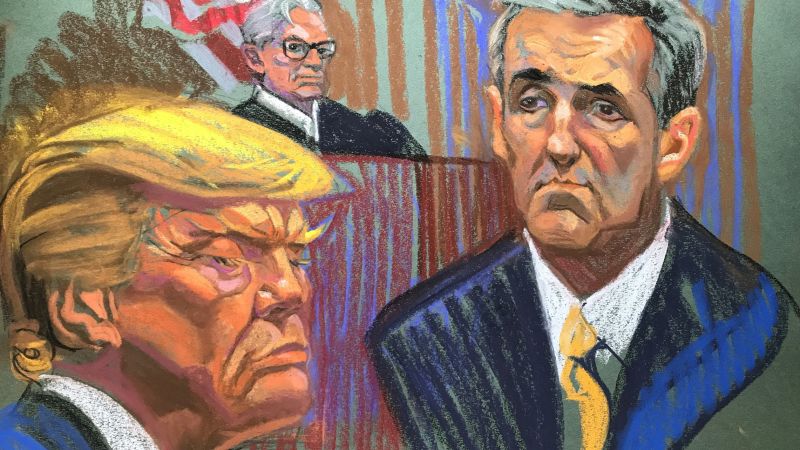Editor’s Note: A version of this article first appeared in the “Reliable Sources” newsletter. Sign up for the daily digest chronicling the evolving media landscape here.
New York
CNN
—
The Donald Trump hush money trial is dragging reporters into uncomfortable territory and laying bare the complicated relationships journalists often have with sources.
Michael Cohen, who continued to testify Thursday, invoked from the stand the names of several high-profile media figures, putting their relationships with the former Trump fixer in the spotlight.
Cohen named The New York Times’ Maggie Haberman and MSNBC’s Katy Tur as reporters which he had established relationships with. He alleged without evidence that ABC News’ John Santucci had tried to pay for the rights to Stormy Daniels’ story. And he spoke about having recorded dozens of phone calls with media figures, including former CNN boss Jeff Zucker.
To be clear, a reporter having working relationships with sources is not unethical — it’s often a hallmark of being a strong journalist and it does not translate into taking orders or publishing unvetted information. Reputable news outlets like ABC News do not pay for interviews, but trying to secure a sit-down with a high-profile subject is anything but uncommon. And speaking on the phone with a source while the person on the other end of the line secretly records says a lot more about that individual than the journalist.
For now, much of what has been described by Cohen in court appears to be routine, run-of-the-mill behavior that occurs each and every day in journalism. But the general public does not work in a newsroom, and regular interactions with sources can be framed in such a way that removes key context and portrays a routine reporting process as nefarious.
That context is crucial. For example, Haberman has indisputably been one of the most authoritative reporters on Trump. For years, her byline has dogged the Queens-born developer-turned-politician, exposing corruption, revealing embarrassing secrets, and shedding light on his authoritarian impulses. In return, Trump has ranted and raged at her endlessly. The notion that Haberman is a commissioned stenographer for Trump is preposterous.
But for Haberman — or any reporter — to get information from Trump-world requires cultivating thorny relationships with sources, many of whom are slimy figures. It is neither unusual nor unethical for journalists to be cordial to the sources whom they get information from. That does not mean they print whatever these sources send them or function as their mouthpieces. It simply means that they have established a relationship that is conducive to the flow and exchange of information. And when the journalist deems that information to be newsworthy, they might then be able to publish it for the world to see.
It’s also worth noting that many of the top journalists covering Trump world have complex histories with the key figures in the case. A witness like Cohen or an attorney like Todd Blanche might be motivated to cast various journalists in unflattering light.
In many ways, the Trump hush money trial has become something of a Rorschach test. People see what they want to see, ignoring evidence before their eyes that runs counter to their chosen narrative. And for the faction of the public that believes some members of the press are too cozy with Trump world, seeing Cohen discuss his relationships with the news media has only reinforced their views.
That reporters are playing a starring role in the trial is also a function of the Trump years. The former president, seeking to use the news media as a foil, cast the journalists covering him as characters in his unrelenting show. Through vile attacks, he moved the reporters from behind the scenes onto the front lines. And so now, amid his criminal trial, it is fitting that members of the press are once again finding themselves in the awkward position of being part of the very story they are covering.

